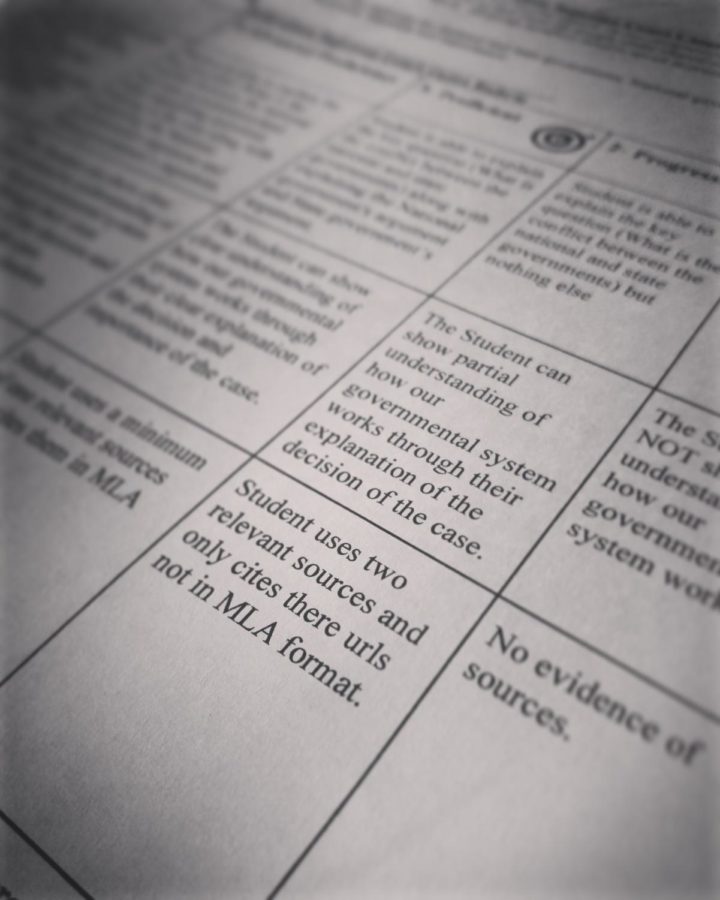Understanding the Standards-Based Grading Scale
December 8, 2017
The implementation of standards-based grading at NHS will happen the beginning of the 2019-’20 school year by administration and staff.
The switch to standards-based grading has been a project for four or five years now, and its arrival to NHS will come by 2019. Principal Brian Wunderlich says that he anticipates the change because he believes it will help students for the greater good.
Standards-based grading is a system of grading that puts an emphasis on students’ mastery or understanding of the skills and standards they are anticipated to learn as they go on with their education. According to Teacherease, which is an website that clarifies standards-based grading for parents and educators new to standards-based education. Standards-based grading (SBG) is an innovation in education that focuses on learning and helps increase achievement. Often, it combines standards-based instruction techniques to engage students and foster a positive environment.
Standards-based grading divides each topic matter into smaller learning goals. By the end of the course, students should be able to master these teachable goals. Student learning with each goal is observed throughout the semester, in which teachers will record the student progress, provide feedback, and accommodate lessons to meet the needs of students.
Average scales in standards-based grading are 1-4, which echoes the students’ progress. A 1 shows that students possess little to no knowledge of a topic and cannot demonstrate any mastery of it. Typically when starting a new learning goal, several students have no previous knowledge, causing them to begin at 1. That being said, as the students learn, they should soon be able to show they have partial mastery, earning a 2. When the student meets a goal, they earn 3, and 4s are given to students who exceed the learning goal.
In addition, students may retest a certain learning goal as many times as needed. At the same time, constant feedback will be reported to the students to let them know what improvements could be made, along with what they are doing right. This means that the most current feedback given from a teacher is the most accurate reading of students’ learning. Thus, if a student demonstrates they have mastered a certain learning goal that they may not have in the past, then that past information must be replaced by their new mastery.
Nonetheless, the administration has yet to decide a proper grading scale. With that in mind, Wunderlich has disclosed that they have been hard at work refining it so they can apply the scale by the beginning of the 2019-’20 school year.
The reason why the Neenah High School administration has decided it is best to switch over to standards-based grading is because they want students to actually learn the skills they are acquiring from these and apply them to their everyday lives rather than students “chasing points.”
“When I was your age, in geometry class, I knew I was going to do the bare minimum to pass that class, but I walked away with zero understanding of geometry. I chased the points to get it done with and move on, and that’s not okay. We need to put something in place so the students can walk away from the class and be successful,” Wunderlich said.
Another reason to switching over to the standards-based grading scale is that it could potentially be used as a foundation for other reforms, according to Educational Leadership. With the transition, it will help improve things within our current curriculum so future students can have better reforms of education.
Ultimately, standards-based grading is to be put in place the 2019-’20 school year by the NHS administration and staff to benefit students with the knowledge they obtain from reaching their learning goals in each course in which they decide to enroll.



Ellie Weisensel • Feb 22, 2018 at 9:54 AM
With this type of grading system, will students still be required to do homework? In many of my classes now, we aren’t required to do homework but we are encouraged to do it. However, our homework grades don’t count towards our overall grade for the semester. How would the administration effectively promote doing homework if it isn’t part of our overall grade?